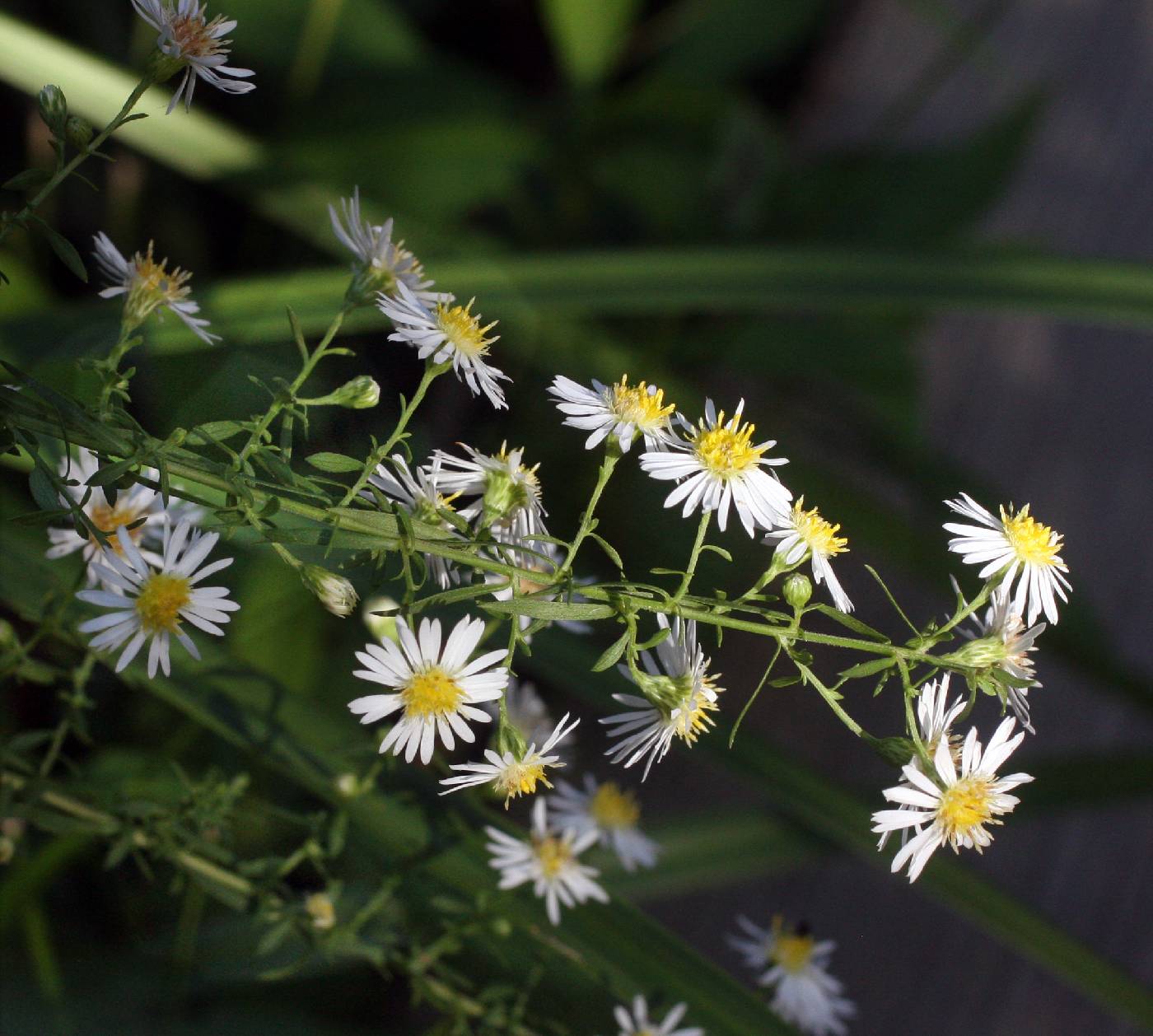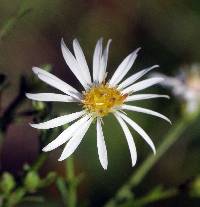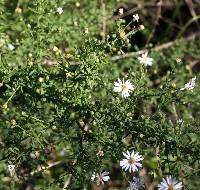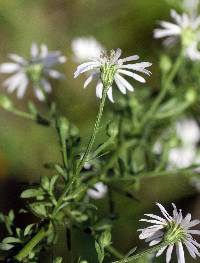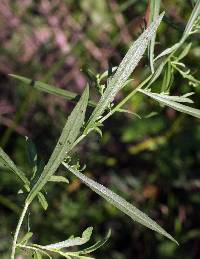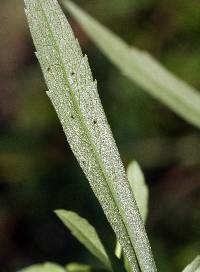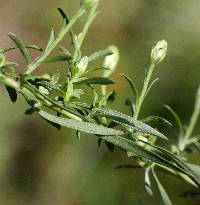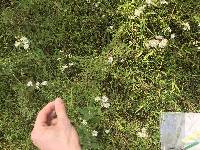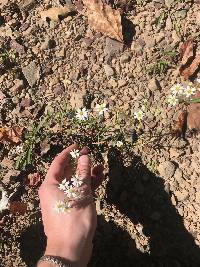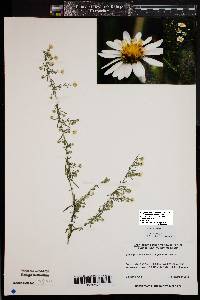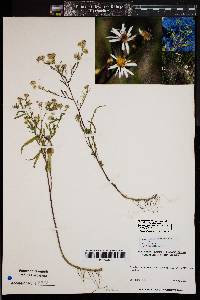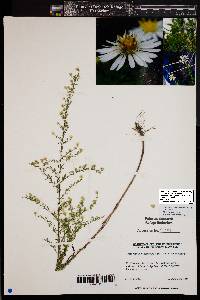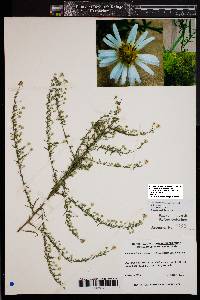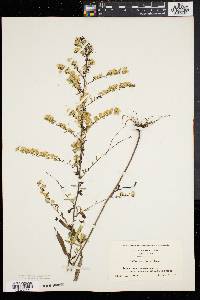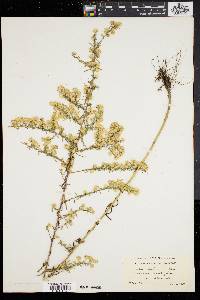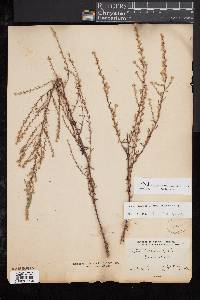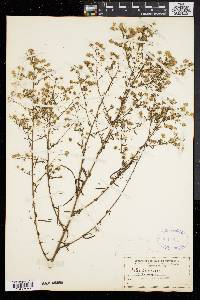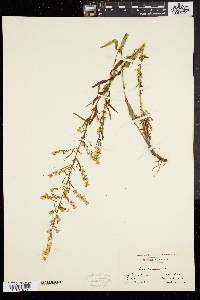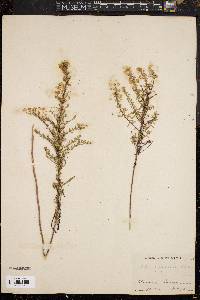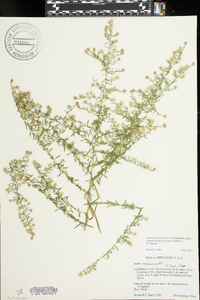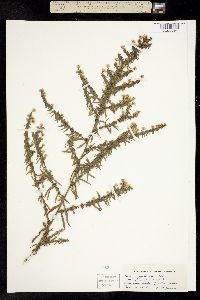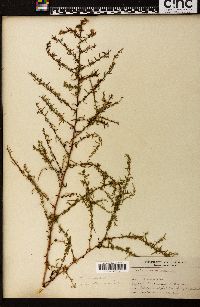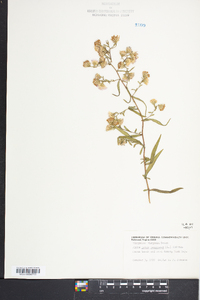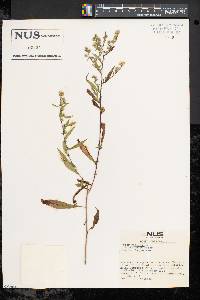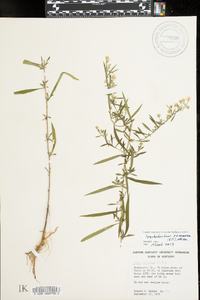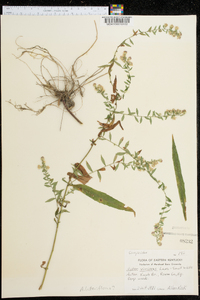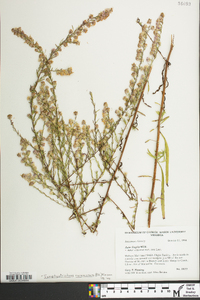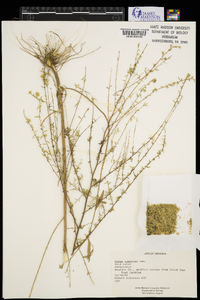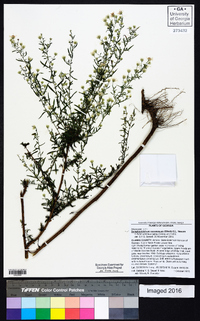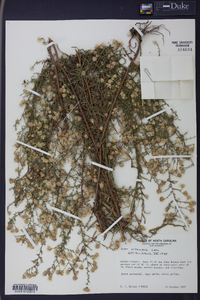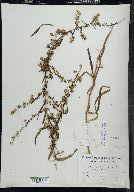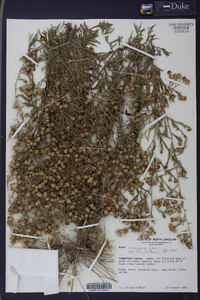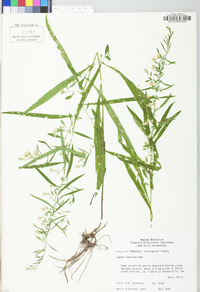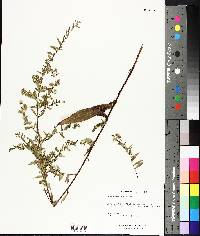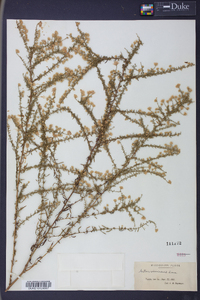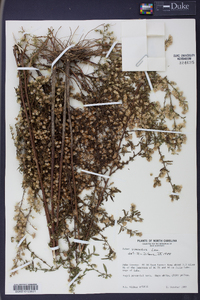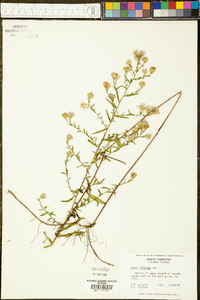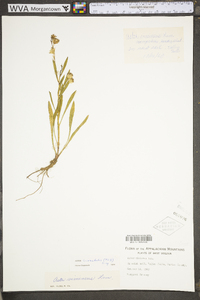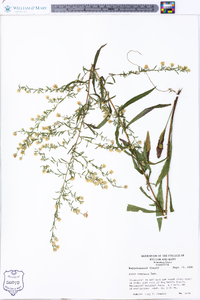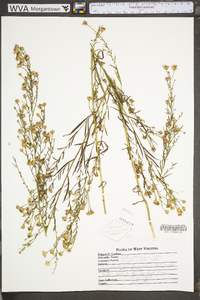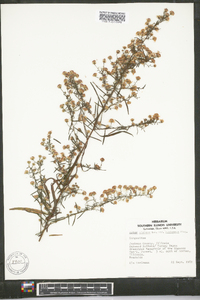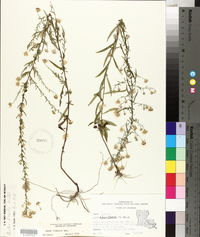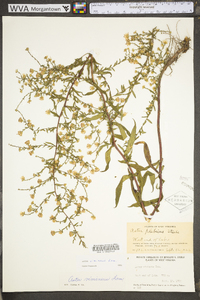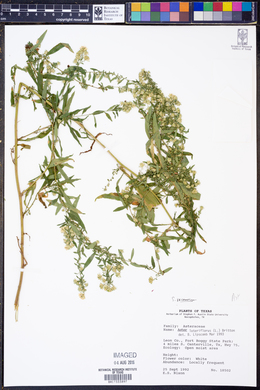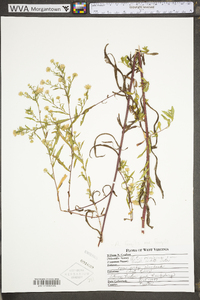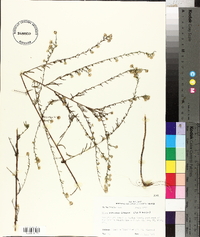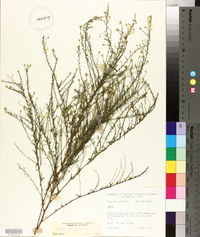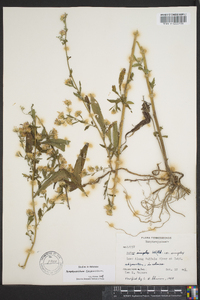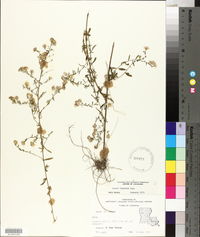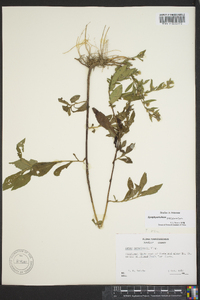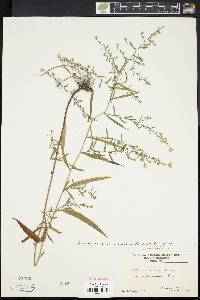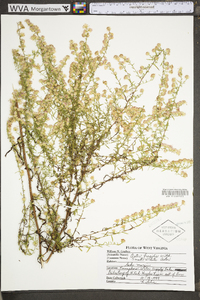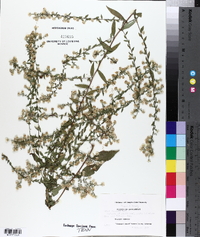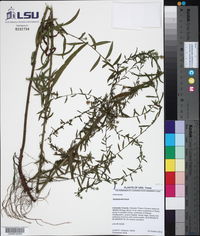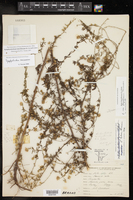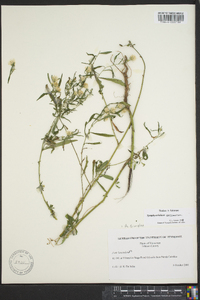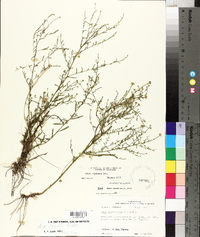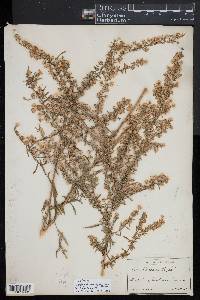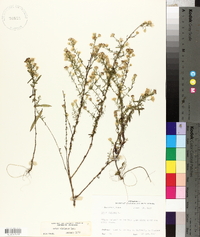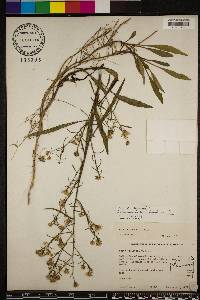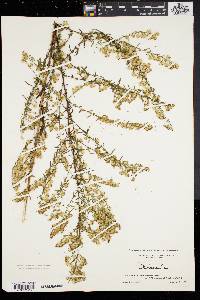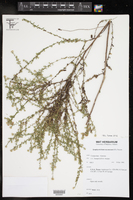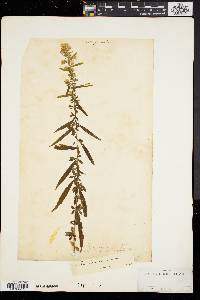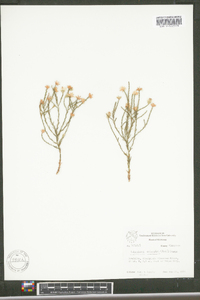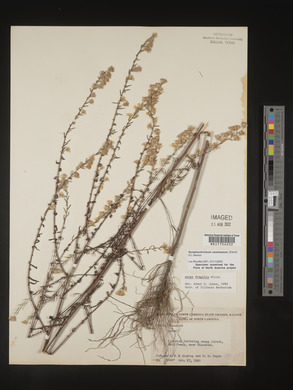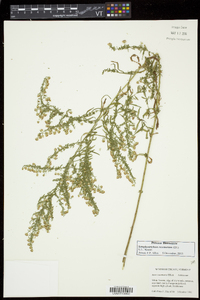
|
|
|
|
Family: Asteraceae
Fragile-Stem American-Aster, more...smooth white oldfield aster
[Aster tenuiculus W. P. C. Barton, moreAster vimineus Lam., Aster vimineus var. subdumosus Wiegand, nom. inq., Aster vimineus var. vimineus] |
Perennials, 30-90(-100) cm, colonial or cespitose; long-rhizomatous or with woody caudices. Stems 1-3+, erect (straight), glabrous or glabrate. Leaves thin, margins often ± revolute, scabrous, apices mucronate to mucronulate, faces glabrous or abaxial minutely pilosulous, cauline with clusters of smaller leaves in most axils; basal withering by flowering (new vernal rosettes often present), petiolate (petioles narrowly winged, sheathing, strigoso-ciliate), blades spatulate to oblanceolate, 5-40 × 5-15 mm, bases attenuate or cuneate to rounded, margins crenate-serrate, apices obtuse to acuminate; proximal cauline withering by flowering, petiolate or subpetiolate (proximalmost) or sessile (petioles winged, sparsely long strigoso-ciliate), blades elliptic or elliptic-lanceolate to lanceolate or linear-lanceolate, 20-70 × 3-20 mm, progressively reduced distally, bases clasping, margins becoming short-ciliate distally; distal (ascending or spreading) usually sessile, sometimes subpetiolate, blades linear-lanceolate to linear, 5-60+ × 1-8 mm, notably unequal in size, reduced distally, abruptly so on branches, bases cuneate to attenuate, margins serrulate or entire. Heads in diffuse, ± pyramidal, paniculiform arrays, branches ± lax, spreading horizontally or arching, racemiform, subtended by patent to reflexed branch leaves, often crowded but not (or barely) secund. Peduncles slender, 0.2-3+ cm or subsessile, hairy in lines, bracts 5-15, linear-elliptic to acicular, 1-2 mm, glabrous, grading into phyllaries. Involucres cylindric, (2.5-)3.5-4.5(-5.5) mm. Phyllaries in 4-6 series, appressed or outer ± spreading, oblong-lanceolate to linear (innermost) , unequal, bases indurate 1 / 4 - 1 / 2 , margins narrowly scarious, hyaline, ciliolate, green zones oblanceolate to linear-oblanceolate, apices acute to acuminate, mucronate, sometimes lightly purple-tinged, faces glabrous. Ray florets (12-)16-20; corollas usually white, rarely pink, laminae 5-8 × 0.5-1.2 mm. Disc florets 10-20(-25); corollas cream or pale yellow becoming pink or red, (2.5-)3-4.5 mm, tubes shorter than narrowly funnelform throats, lobes recurved to erect, lanceolate, 0.5-1 mm. Cypselae gray to tan, obovoid, ± compressed, 1-1.8 mm, 4-5-nerved (faint), faces sparsely strigillose or sericeus; pappi white, 2.5-3.5 mm. 2n = 16. Flowering Aug-Oct. Moist to wet, often alluvial soils, often brackish, marshes, savannas, bogs, wet meadows, prairie swales, swamps, borders of swamps, open bottomwoods; 0-200 m; N.B., Ont.; Ala., Ark., Conn., Del., D.C., Fla., Ga., Ill., Ind., Iowa, Ky., La., Maine, Md., Mass., Mo., N.J., N.Y., N.C., Ohio, Okla., Pa., R.I., S.C., Tenn., Tex., Vt., Va., W.Va. Symphyotrichum racemosum is introduced in Canada. The species is cultivated commercially under the name Aster ericoides cv. `Spray´. A. G. Jones (1989) reported hybridization with S. dumosum, S. lateriflorum, S. lanceolatum var. interior, and S. ontarionis. The name Aster vimineus Lamarck has been misapplied to this taxon.
From Flora of Indiana (1940) by Charles C. Deam All of my specimens are from the southern part of the state, where they are usually found in a hard, white, moist, slightly acid, clay soil on the borders of ponds, in low woodland and fallow fields, and along roadsides. Most of my specimens are from low places in beech and sweet gum woods in the southeastern part and from low, post oak, shingle, and pin oak woods in the southwestern part. It has been reported from several counties of northern Indiana, but I believe many or all of the reports should be referred to some other species. I have seen the Porter County specimen and it is Aster dumosus. [Deam recognized a variety subdumosus.] In this variety the heads are solitary on the ends of long, slender, more uniformly bracted peduncles. The leaves of the branches and branchlets are linear and acute. The rays are somewhat more numerous, 17-30. A specimen of this variety was found in an open, low, flat woods in Daviess County, where it was associated with other southern species. …… Indiana Coefficient of Conservatism: C = 4 Wetland Indicator Status: FACW |
|
|
|
This project was made possible in part by the Institute of Museum and Library Services [MG-70-19-0057-19].
Powered by Symbiota

